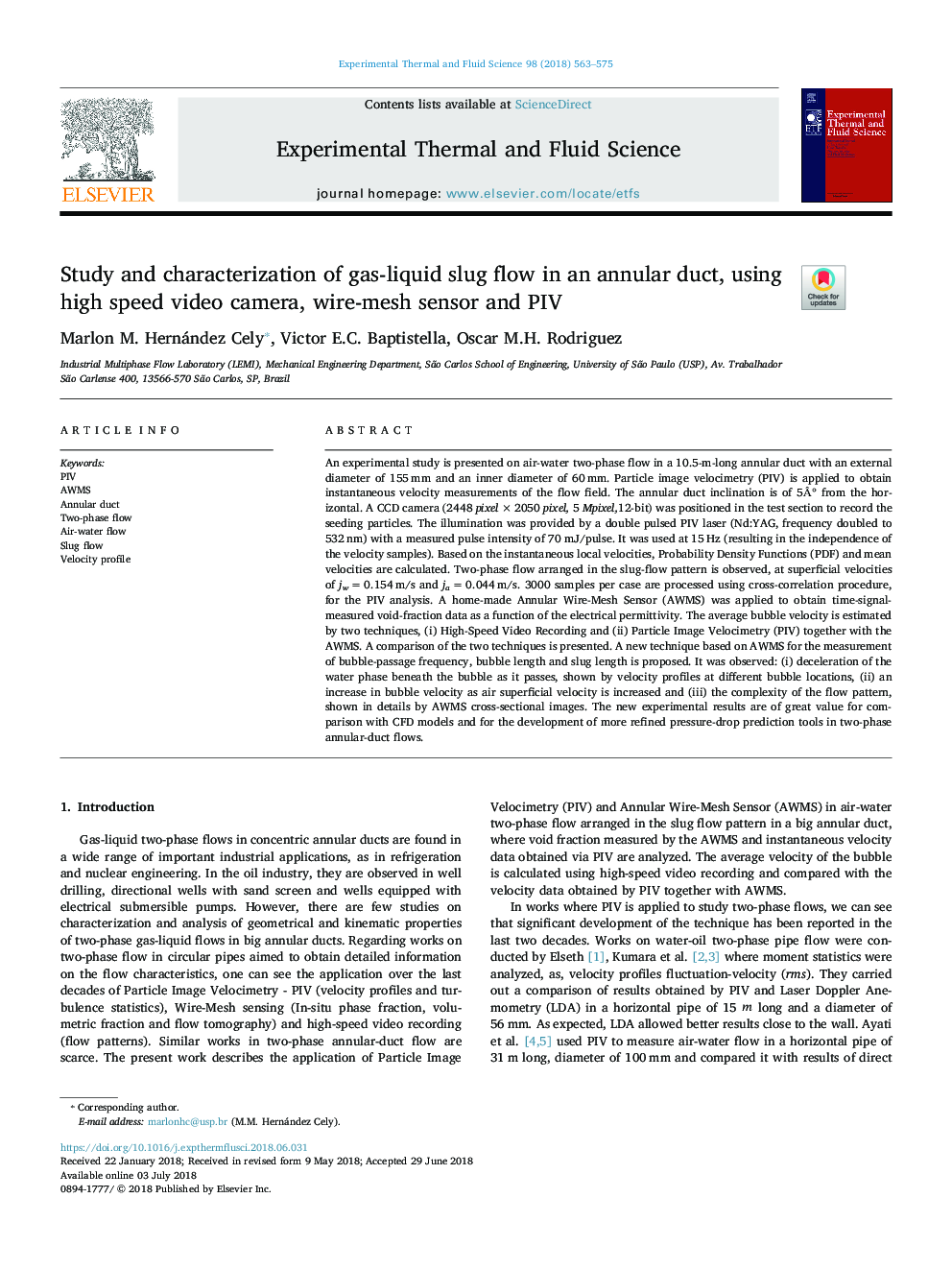| Article ID | Journal | Published Year | Pages | File Type |
|---|---|---|---|---|
| 7051561 | Experimental Thermal and Fluid Science | 2018 | 13 Pages |
Abstract
An experimental study is presented on air-water two-phase flow in a 10.5-m-long annular duct with an external diameter of 155â¯mm and an inner diameter of 60â¯mm. Particle image velocimetry (PIV) is applied to obtain instantaneous velocity measurements of the flow field. The annular duct inclination is of 5ð from the horizontal. A CCD camera (2448 pixelâ¯Ãâ¯2050 pixel, 5 Mpixel,12-bit) was positioned in the test section to record the seeding particles. The illumination was provided by a double pulsed PIV laser (Nd:YAG, frequency doubled to 532â¯nm) with a measured pulse intensity of 70 mJ/pulse. It was used at 15â¯Hz (resulting in the independence of the velocity samples). Based on the instantaneous local velocities, Probability Density Functions (PDF) and mean velocities are calculated. Two-phase flow arranged in the slug-flow pattern is observed, at superficial velocities of jwâ¯=â¯0.154â¯m/s and jaâ¯=â¯0.044â¯m/s. 3000 samples per case are processed using cross-correlation procedure, for the PIV analysis. A home-made Annular Wire-Mesh Sensor (AWMS) was applied to obtain time-signal-measured void-fraction data as a function of the electrical permittivity. The average bubble velocity is estimated by two techniques, (i) High-Speed Video Recording and (ii) Particle Image Velocimetry (PIV) together with the AWMS. A comparison of the two techniques is presented. A new technique based on AWMS for the measurement of bubble-passage frequency, bubble length and slug length is proposed. It was observed: (i) deceleration of the water phase beneath the bubble as it passes, shown by velocity profiles at different bubble locations, (ii) an increase in bubble velocity as air superficial velocity is increased and (iii) the complexity of the flow pattern, shown in details by AWMS cross-sectional images. The new experimental results are of great value for comparison with CFD models and for the development of more refined pressure-drop prediction tools in two-phase annular-duct flows.
Related Topics
Physical Sciences and Engineering
Chemical Engineering
Fluid Flow and Transfer Processes
Authors
Marlon M. Hernández Cely, Victor E.C. Baptistella, Oscar M.H. Rodriguez,
